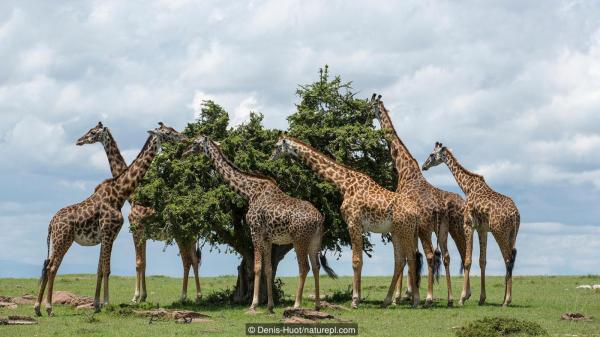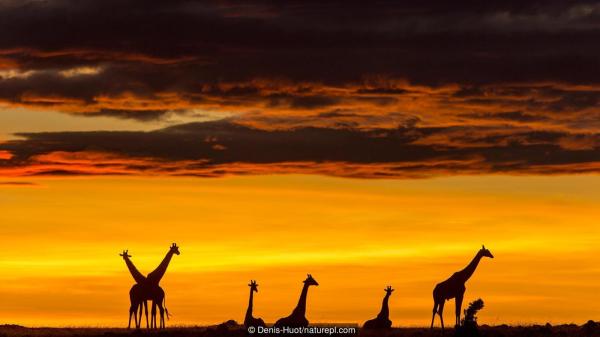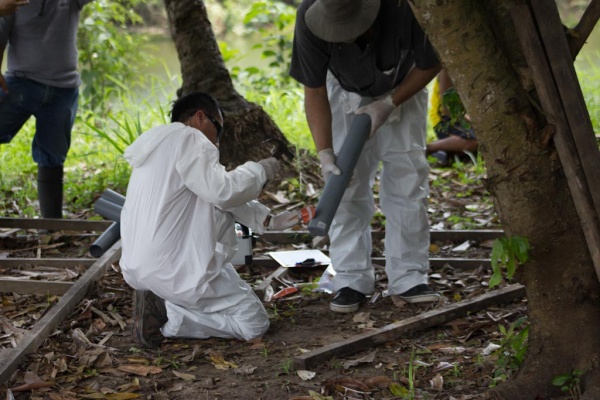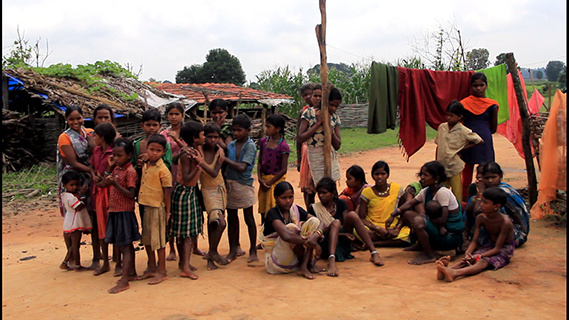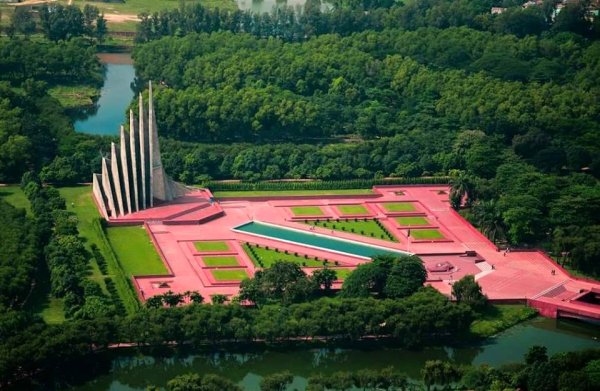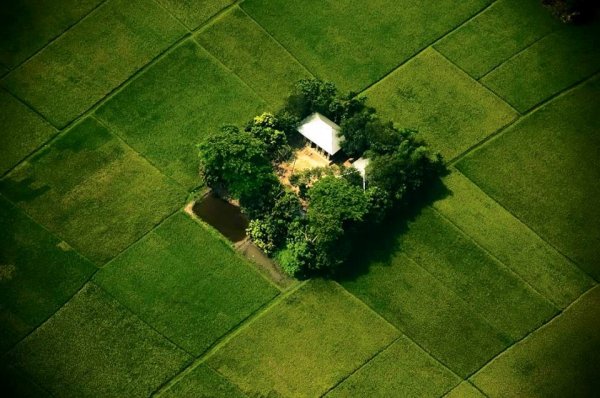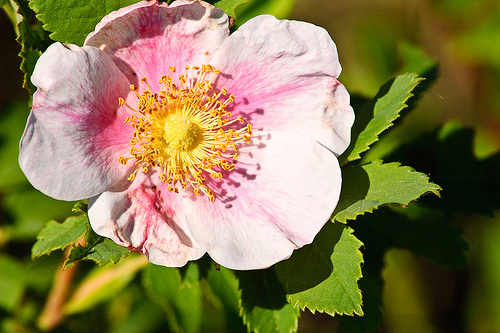 In shock, in solidarity
In shock, in solidarity
|
Posted:Jul 5, 2016 12:19 am
Last Updated:Jun 7, 2021 10:06 am 7976 Views
|
In shock and in solidarity,we mourn the victims of Dhaka terror attack. our sorrows know no bound
Today, I am not here to post an informative blog about something interesting that may either amuse or please my readers!
Today, I am here to mourn the victims of Dhaka terror attack.
Today, I am here only to shed tears silently for those innocent young and old men and women, both local and foreign, alike who were brutally butchered by Seven coldblooded trained murderers on the night of July !, 2016 last in a bakery cum restaurant located on a street of a highly secured area of the city where I reside now!
Please allow me to cry alone. Do not ask me to explain how such senseless atrocities could happen in a secular country like mine! Because, truth is that some of the small-minded fanatical bigots have managed to destroy the good image of my secular country! I do not know who these coldblooded murderers are. Are they local or from another Country? Are they professional terrorists who like to murder for pleasure only to scare us all? Or are they a bunch of Killers trained to kill innocents in the name of religion? Because, such questions will not bring back those who were brutally massacred in that bakery cum restaurant on that fateful night! I could now only wonder whether it will be possible for us to leave our Grand safe under a fearless sky, and on a secured land before we go to meet our creator!
Dear readers, may I request you to join me to pray for the departed souls, irrespective of their nationality or color of their skins and or the religions they practiced while alive?
Photos of Faraz Hassan, Abanti Kabir and Taroushi Jain who were killed by the terrorists on 1st July,2016 in Dhaka along with other seventeen persons.

|
|
|
20
Comments
|
|
 Natural or Sexual Selection !
Natural or Sexual Selection !
|
Posted:Jul 1, 2016 6:10 am
Last Updated:Nov 4, 2021 4:31 am 7472 Views
|
Wish We Knew The Truth!
Which are the tallest land mammals in this planet called Earth?
We need not consult a reference book or visit a zoo for the correct answer. We all know that Giraffes are the tallest land mammals.
The next question may sound a tricky one to some!
How tall is a normal male Giraffe?
While a male Giraffe, with its long legs and neck can be up to 18ft tall, a female is naturally less than that.
The third question, I presume, could really be a tricky one even for those who look after Giraffes in a zoo.
Could anyone tell why the Giraffes happen to be long necked mammals?
The ready answer to this question is always at hand! Many of us, rather most of us, would say that Giraffes’ long necks are for helping them to reach food in the tops of trees. The answer sounds absolutely correct.
Not so fast.
This contention may not be one hundred percent correct even though a Giraffe also needs browsing on the leaves of trees for food! Wild Giraffes outmatch even Elephants to strip leaves from the upper reaches of the trees!
Jean-Baptiste Lampark, the French zoologist, is credited for this suggestion! However, according to Charles Darwin, the giraffe's neck resulted from repeated "natural selection".
Moreover, the notion that the long necks have evolved in giraffes for allowing them to collect food from the tree tops is not at all entirely correct because the Giraffes generally feed from low shrubs, not tall trees, during the dry season when feeding competition is very much intense
It is also true that Giraffes feed faster with their necks bent.
It may also not be out of place here to mention that these views became known as the "competing browsers" hypothesis as because it suggested that competitive pressure from smaller browsers, such as kudu, steenbok and impala, encouraged the elongation of the neck, as it enabled giraffes to reach food that competitors could not.
The beliefs, however, changed to a great extent in the year 1996, when zoologists Robert Simmons and Lue Scheepers introduced a new idea now known as the "necks-for-sex" hypothesis.
The idea tells us that long necks are the result of sexual selection! In other words we can say that the Giraffe’s extraordinary neck is a result of intense competition between males for access to females! And this is the reality according to most present day scientists.
However, my readers may not please ask me to explain why female Giraffes also have long necks! Do the long necks assist the female Giraffes to look for strong and large males for sexual pleasure,?
Happy Reading….
Source: Various Media
Photo Credits: Anup Shah, Charlie Summers, Denis-Huot and Cheryl-Samantha Owen.

|
|
|
14
Comments
|
|
 Not a Magic Trick---- Pure Science
Not a Magic Trick---- Pure Science
|
Posted:Jun 26, 2016 3:25 am
Last Updated:Sep 27, 2019 11:51 pm 7289 Views
|
Could the rhythm of daily life be governed by nature?
Those who are interested to learn more about it may please ponder on the question before going through the appended story.
What could happen to us if our accesses to electricity, piped water or other daily needs are lost suddenly due to unforeseen catastrophe?
If interested, you may read the story of a small and modest indigenous community in the heart of the Peruvian jungle, where the rhythm of daily life is governed by nature.
The story is pasted below without making any change to the original for those who are really interested to know what happened to the people of a remote village located in a Peruvian Jungle after they lost access to the little electricity they had:
“The village is only accessible by a 5-hour boat ride along the Ucayali River from the town of Pucallpa (in the Ucayali region, in the extreme east of Peru). There are 173 people of the Shipibo-Conibo ethnic group living in Nuevo Saposoa, one of the largest yet most forgotten indigenous groups of Peru.
In March 2015, a severe flood changed their course of life. The rustic local power plants were damaged, the cables were destroyed and Nuevo Saposoa lost access to the little electricity it had. In the middle of the Amazon, a village was left in darkness. The Peruvian government struggled to intervene in the short term.
It was then that a team of professors and students from the Universidad de Ingeniería y Tecnología (UTEC) came up with the idea of creating Plantalámparas (“plant lamps”). Why not solve the problem caused by nature with a solution from nature, they asked.
Elmer Ramírez, a professor at UTEC, explains that Plantalámparas are efficient, energy-saving lamps (300 lumens) that generate light using photosynthesis from plants. “Plants take CO2 (carbon dioxide) from the environment and water and minerals from the ground. Using these components, plants produce nutrients to grow, but they make these nutrients in excess. The plant expels the excess nutrients into the ground, where they interact with various micro-organisms in a complex electrochemical process, generating electrons,” explains Ramírez.
He continues, “We capture these electrons using electrodes and store them in a battery. Once charged, this battery can power an efficient, energy-saving lamp. A Plantalámpara can stay on for two hours, and then can always be recharged using the same process we described before. It is an environmentally friendly product.”
When the professors and students from UTEC travelled to Nuevo Saposoa and explained the process by which a plant could generate electric light, the inhabitants were skeptical. And when they performed their tests and the first light bulb was turned on, there were a few nervous laughs, as if it were a magic trick rather than science.
“It’s a type of renewable energy that has a lot to give, since there are plants all over the world,” explains Marcello Gianino, a young university student.
The impact of the plant lamps on the daily life of the Nuevo Saposoa inhabitants is already beginning to be felt. For now, many hope to finish school so they can study something related to energy and the environment at university.
Every inhabitant of this indigenous community can now have at least two hours of light, and can power the Plantalámparas so that others can benefit. The schoolchildren are the ones who get the most out of this initiative."
Hello dear readers,do you like such initiatives?
Story ::Ricardo León, El Comercio
Photos:Santiago Barco

|
|
|
14
Comments
|
|
 Fest of summer Fruits
Fest of summer Fruits
|
Posted:Jun 23, 2016 11:39 pm
Last Updated:Jan 31, 2023 12:15 am 6501 Views
|
Summer Fruits of BD
We have since almost passed through summer--the season that is dreaded by the people of the country where I live now. It will be followed by rainy season--- the season when the torrential rains would sweep the entire country clean almost daily. However, Some of us do not like the season as it is too wet. While the rain keeps us closed inside our homes—summer heat (and humidity too) makes our lives miserable. However, both these two seasons have special attractions to us. Nature provides us with tasty fresh fruits during these two seasons. Here below are the pictures of the fruits that have since flooded the markets! May be, some of the readers could recognize some of the fruits on first look. However, some may remain always unknown to many!!!
Happy Viewing:
Source: The Daily Star
Photo Credits: Anisur Rahman

|
|
|
9
Comments
|
|
 Jungle Book: Rudyard Kipling:Disney Movie :Baiga and Gond Tribes.
Jungle Book: Rudyard Kipling:Disney Movie :Baiga and Gond Tribes.
|
Posted:Apr 23, 2016 6:37 am
Last Updated:May 9, 2016 11:30 pm 7956 Views
|
This morning, my eldest grand had phoned me to accompany her to watch the new Jungle Book Movie now showing in a theater complex!
I told her that my conscience does not permit me to watch the movie as the tribes known as Baiga and Gond who lived in the particular forest since time immemorial that inspired Rudyard Kipling to write the original book, were illegally evicted from this area in 2014, while fee- paying tourists are now being welcomed in!
I have since shared with my grand some details of what happened to the tribal people lived there in the jungles, specially the brutal treatment they have reportedly received at the hands of park guards when the eviction process was going on.
Those who do not know where and how the evicted people of these two particular tribes live now , I take this opportunity to append the text of a mail sent to me by the “Survival International” for information and also sharing the text with others!
Quote….Kanha markets itself as the “inspiration” for The Jungle Book, and encourages large-scale tourism on the grounds that “nowhere can you see [tigers] as often.” But few visitors or viewers of the Disney film will be aware of the violence and intimidation inflicted on tribal peoples in the home of The Jungle Book in the name of tiger conservation.
The Forest Department claims that tribes accept “voluntary relocation”, but in reality they are coerced into “accepting” eviction with bribes and the threat of violence. Some are moved to government resettlement camps, but others are simply pushed out and forced to live in abject poverty on the edges of their territory.
Following the Kanha forced evictions in 2014, one Baiga man said: “We were one of the last families to resist. But the people from the reserve forced us to leave. They told us they’d take care of us for three years, but they didn’t do a thing. Even when my brother was killed, no one came to help us.”
Another Baiga tribesperson said: “We are lost – wandering in search of land. Here there is only sadness. We need the jungle.
The big conservation organizations are guilty of supporting this. They never speak out against evictions. But many Indian tribes actually revere the tiger, and have lived peacefully alongside them for generations.
There is no evidence that evictions protect tigers; in fact they’re more likely to harm them by alienating local people from conservation efforts.
Tribal peoples are the best conservationists and guardians of the natural world. They should be at the forefront of tiger conservation, but instead, they are being excluded. There is even evidence of more tigers living in areas where the people have not been thrown out.
Survival’s director Stephen Corry said: “We hope that this film helps bring some attention to the suffering currently being inflicted on tribal people across India in the name of tiger conservation. When India’s tiger population crashed in the last century it had nothing to do with tribes. It happened thanks to rapid industrialization and the wholesale slaughter carried out by colonial hunters and Indian elites. Yet all over India, tribes are paying the price for this: They’re kicked off their ancestral land to be replaced by tourists in their thousands.”
Share this news story…….Unquote.

|
|
|
4
Comments
|
|
 Not a pleasant subject for a discussion!
Not a pleasant subject for a discussion!
|
Posted:Apr 12, 2016 11:04 am
Last Updated:Feb 18, 2019 4:48 am 8075 Views
|
What is the popular perception of death?
Is it seeing a light and a tunnel? Or is it some thing strange that one may experience? However, none can say what it is as none has ever met death and then came back to tell what it is really like! That is why death will always remain a feared phenomenon to human beings as our very nature makes us fearful of what we do not understand and can not control.
Death is not a pleasant subject for discussion! It is unlike anything else. Such uniqueness of death may cause each individual’s experience also unique. Therefore, the perception of a person about death may be contradictory to that of another.
Let us read what Rachel Nuwer of BBC discovered and reported in these respects. The entire report of Nuwer is not being pasted here for obvious reason. Those who are interested to know more on the matter may please look for the details on BBC online!
Quote…In 2011, Mr. A, a 57-year-old social worker from England, was admitted to Southampton General Hospital after collapsing at work. Medical personnel were in the middle of inserting a catheter into his groin when he went into cardiac arrest. With oxygen cut off, his brain immediately flat-lined. Mr. A died.
Despite this, he remembers what happened next. The staff grabbed an automated external defibrillator (AED), a shock-delivery machine used to try to reactivate the heart. Mr A heard a mechanical voice twice say, “Shock the patient.” In between those orders, he looked up to see a strange woman beckoning to him from the back corner of the room, near the ceiling. He joined her, leaving his inert body behind. “I felt that she knew me, I felt that I could trust her, and I felt she was there for a reason [but] I didn’t know what that was,” Mr A later recalled. “The next second, I was up there, looking down at me, the nurse and another man who had a bald head.”
Hospital records later verified the AED’s two verbal commands. Mr A’s descriptions of the people in the room – people he had not seen before he lost consciousness – and their actions were also accurate. He was describing things that happened during a three-minute window of time that, according to what we know about biology, he should not have had any aware
Mr A’s story – described in a paper in the journal Resuscitation – is one of a number of reports that challenge accepted wisdom on near-death experiences. Until now, researchers assumed that when the heart ceases to beat and stops sending vital blood to a person’s brain, all awareness immediately ends. At this point, the person is technically dead – although as we learn more about the science of death, we are beginning to understand that, in some cases, the condition can be reversible. For years, those who have come back from that inscrutable place have often reported memories of the event. Doctors mostly dismissed such anecdotal evidence as hallucinations, and researchers have been reluctant to delve into the study of near-death experiences, predominantly because it was viewed as something outside of the reach of scientific exploration.
But Sam Parnia, a critical care physician and director of resuscitation research at Stony Brook University School of Medicine in New York, along with colleagues from 17 institutions in the US and UK, wanted to do away with assumptions about what people did or did not experience on their deathbeds. It is possible, they believe, to collect scientific data about those would-be final moments. So for four years, they analysed more than 2,000 cardiac arrest events – moments when a patient’s heart stops and they are officially dead.
Of those patients, doctors were able to bring 16% back from the dead and Parnia and his colleagues were able to interview 101 of them, or about a third. “The goal was to try to understand, first of all, what is the mental and cognitive experience of death?” Parnia says. “And then, if we got people who claimed auditory and visual awareness at the time of death, to see if we are able to determine if they really were aware.”
Mr A, it turned out, was not the only patient who had some memory of his death. Nearly 50% of the study participants could recall something, but unlike Mr. A and just one other woman whose out-of-body account could not be verified externally, the other patients’ experiences did not seem to be tied to actual events that took place during their death…Unquote.
Death is no more a scary phenomena to me. I trust that death is nothing but a feeling of peace and pleasantness.
Source: BBC Online

|
|
|
10
Comments
|
|
 Bird's eye View of my Homeland.
Bird's eye View of my Homeland.
|
Posted:Apr 10, 2016 8:34 am
Last Updated:May 7, 2023 2:50 pm 8431 Views
|
The pictures appended are the bird’s eye views of landmarks in and around the city of Dhaka where I live now.. Credits for these photographs rest with Major Rumman Mahmud of Bangladesh Army. The photos are really stunning. Here below are some details of each picture for those who are interested to know more!
1.Bird’s eye view of the Bangladesh National Parliament House designed by the famous architect Louis Kahn. The complex is one of the largest legislative complexes in the world, comprising 200 acres.
2. The magnificent aerial view of the 17th century incomplete Mughal fort complex that stands proudly on the bank of the River Buriganga in the southwestern part of Dhaka. It is known as Lalbagh Fort!
3. 4 wind turbines, each producing 225 kW of electricity, built on the dam over the river Muhari, far away from Dhaka. The dam was constructed on the mighty river in 2005.
4. Bird’s eye View of the National Martyrs' Memorial. It is the symbol built in the memory of the velour and the sacrifice of all those who sacrificed their lives in the Bangladesh Liberation War of 1971.
5. This aerial view of Mirpur Cantonment, an amazing part of Bangladesh, is also located in this great ancient city of Dhaka. The heart shaped water body refreshes the minds of the residents of this area even from their balcony.
6. Imagine this bird’s eyes view of a small hut near a small pond where a Bangladeshi family lives for peace and tranquility! Many Villagers in this country always craves for such place, surrounded by green, to live peacefully!
7. The first day of Bengali calendar, Pahela Baishakh, will be celebrated here in Dhaka as usual on 14th April. This is a aerial picture of one of the past celebration of the event. It is a country wide celebration!
8. Do you like the mosaic in green? Almost all the paddy fields in Bangladesh would look like this if you view it from far above!
9. Aerial view of one of the largest river ports in the world. It is known as Sadarghat River front of the city of Dhaka. About 200 large and small passenger launches depart and arrive at the terminal every day.
10. Birds eye view of the oldest Dhaka University Students Residential Hall named "Salimullah Muslim Hall". I feel proud that I was an attached student of this knowledge hub that grew old while I was a post graduate student of the University of Dhaka studying Economics in 1957-58.

|
|
|
15
Comments
|
|
 Kathmandu Kolors
Kathmandu Kolors
|
Posted:Apr 6, 2016 9:21 am
Last Updated:Jun 8, 2016 2:28 pm 10043 Views
|
Many of us may have visited the great tourist destination Nepal while traveling through the Indian sub-continent.
Nepal has much to offer to a tourist.
The visitors will be simply amazed to see the natural beauty and surrounding history of Kathmandu, the capital of Nepal, and its people.
Outside the valley of Kathmandu, there are many beautiful and interesting places to visit.
Nepal is one of the most exotic destinations of the world that a traveler would always cherish to visit at least once in his life time.
However, my intention here is not to describe the inner and outer beauties of the land of Mount Everest or the country where Buddha was born!
I may not tell my readers about a small country, located high in the Himalayan Mountains with its deep valleys, lush Jungles, exotic wildlife and diverse peoples.
However,I intend to post the pictures of the exquisite, unique and colorful Nepalese jewellery that can not be compared even with jewellery that are worn by the women of their other sub continental neighbors!
Let me share with you the Kathmandu Kolors!

|
|
|
23
Comments
|
|
 May we enjoy a respite from the blog wars…..........
May we enjoy a respite from the blog wars…..........
|
Posted:Apr 4, 2016 6:46 am
Last Updated:Nov 2, 2022 4:46 am 7974 Views
|
Just for a respite from the blog wars and also to test our mental acuity, we may endeavor to answer the following brain teasers if we feel like.
I see no harm in trying! Join me please to wreck our grey matters!! Please leave your comments here on this blog page of mine.
1. How much dirt is there in a hole that measures two feet by three feet by four feet?
2. Before Mt. Everest was discovered, what was the highest mountain in the world?
3. A clerk at a butcher shop stands five feet ten inches tall and wears size 13 sneakers. What does he weigh?
4. Johnny’s mother had three . The first was named April. The second was named May. What was the third ’s name?
5. What word in the English language is always spelled incorrectly?
6. A farmer has five haystacks in one field and four haystacks in another. How many haystacks would he have if he combined them all in one field?
7. Which is correct to say, “The yolk of the egg is white” or “The yolk of the egg are white?”
8. If you were running a race and you passed the person in 2nd place, what place would you be in now?
9. In British Columbia you cannot take a picture of a man with a wooden leg. Why not?
10. Billie was born on December 28th, yet her birthday always falls in the summer. How is this possible?
Answers:
After 12 hours from now. My contributions to the teasers are nil.

|
|
|
6
Comments
|
|
 The Wild Roses
The Wild Roses
|
Posted:Mar 10, 2016 7:46 am
Last Updated:Jan 8, 2017 6:26 pm 8859 Views
|
Certain flowering shrubs is commonly known as the wild rose.
According to Wikipedia, the free encyclopedia, “the botanical term for wild rose is "species rose", which means just what it says — a species that occurs naturally, with no help from man — a true "wildflower." There are over 100 of these worldwide, some native to North America, many from the Orient and Europe. These true wild roses are all single with exactly five petals — never more, and almost all of them are pink, with a few whites and reds, and even fewer that range toward yellow.”
Readers are hereby informed that the appended 10 photos of the Wild Roses are true wild roses. None of these roses is from the hybrid varieties ((By the way, there are now over 20,000 hybrids, with about 200 new ones every year.) The first white one is from my homeland. Rest nine is from other countries. It may also be mentioned here that roses have been hybridized since Roman times!
Wild roses practically grow almost anywhere. The plants are pest-and disease-resistant. Do not be surprised if you come across wild roses blooming in most unlikely places. It may be on plateaus and prairies, as well as in ravines and open woods.
Poet and writers have always compared love with wild roses! Emily Bronte wrote, “Love is like the wild rose." Robert Burns stated it clearly and simply, "My love is like a red, red rose."
Wild Roses Are Forever
Happy Viewing, Dear Readers:
Source,: The Daily Star, Online reports and Free Encyclopedia.

|
|
|
16
Comments
|
|













